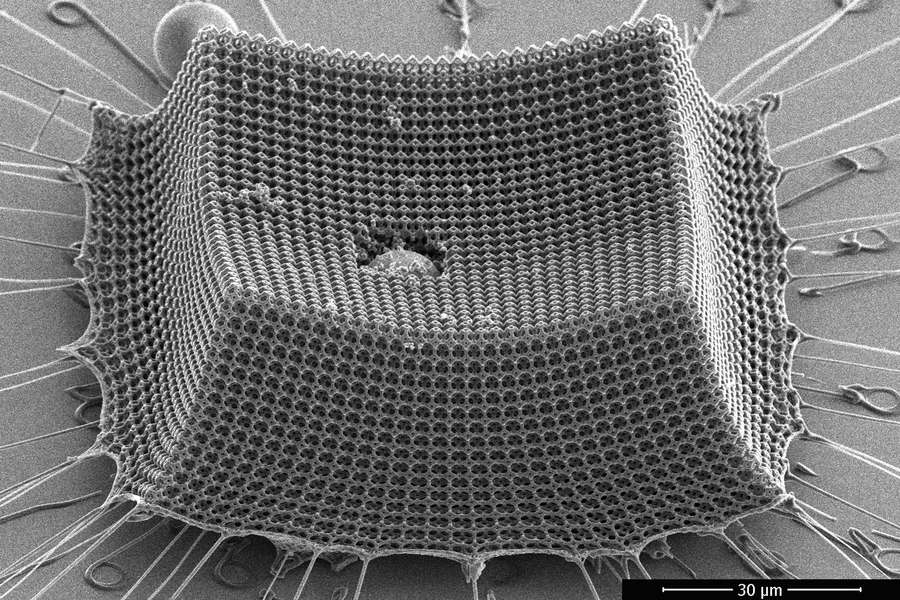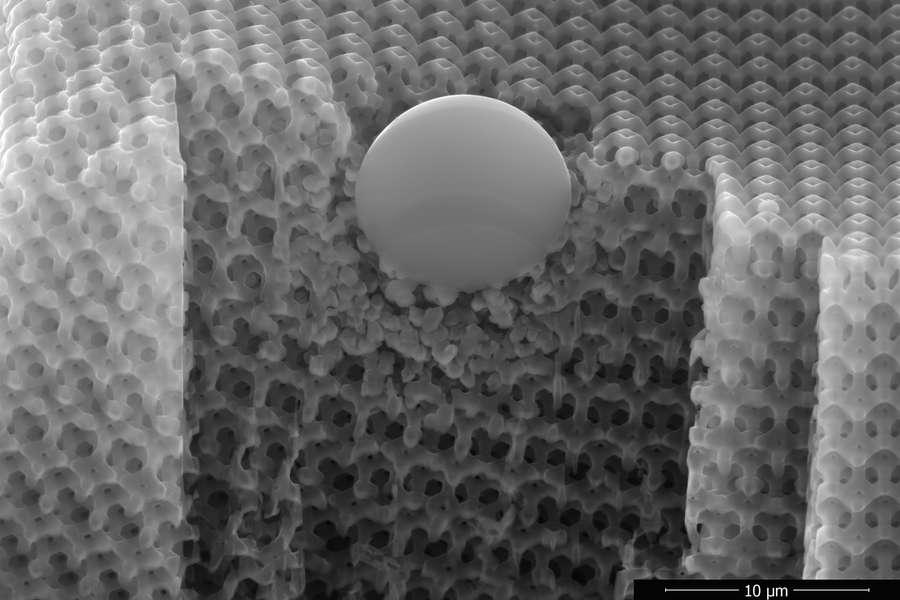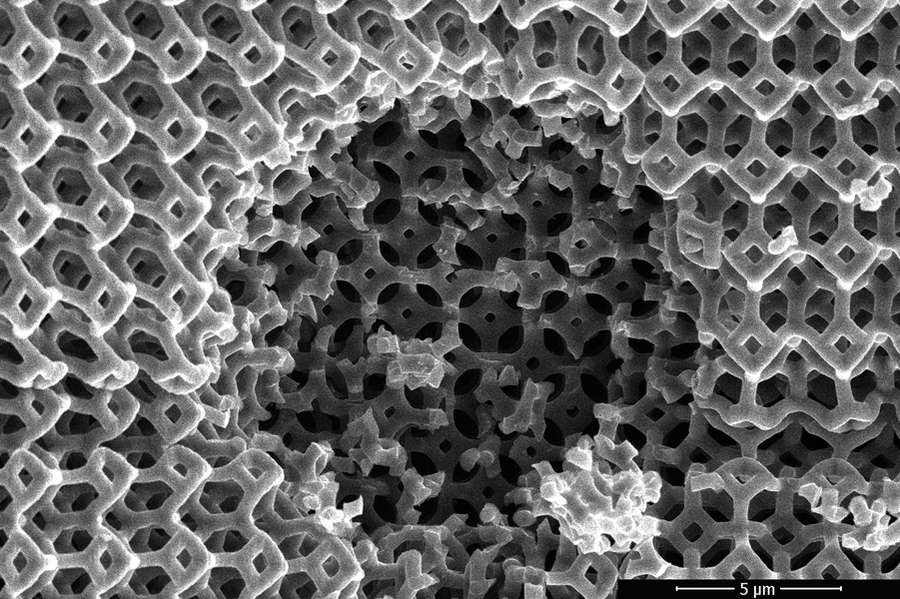Create a free profile to get unlimited access to exclusive videos, sweepstakes, and more!
Is MIT's new nanoscale armor mightier than Middle-earth's mythic Mithril?

Harnessing the fantastic dynamics of the mighty molecule to create a super-tough armored substance, materials scientists at MIT, ETH Zurich, and CalTech, have developed a promising new durable material made up of nanoscale carbon struts.
The results of their study were recently published in the online journal Nature Materials. This ultralight, carbon-based substance actually fends off supersonic microparticle impacts and might be a basis for lighter, tougher alternative to Kevlar and forged steel.
The team’s “nanoarchitected” material is designed from perfectly patterned nanoscale structures that could also provide a rugged foundation for a whole new generation of protective coatings, blast shields, and similar impact-resistant products.
After a series of durability tests, the team observed that the material, which is actually thinner than the width of a single human hair, stopped the blasted miniature projectiles from ripping through it.
Next-generation armor materials display micro-thin, featherweight attributes and currently scientists are making astonishing discoveries in this evolving field that will impact all areas of industry. Many of the researchers' inspirations come from Mother Nature’s inventions such as fish scales and snail shells.
Scientists on this project began with photosensitive resins that were treated with lasers to create a lattice pattern comprised of repeating microscopic struts. Next, the material was inserted into a high-temperature vacuum chamber where the polymer was transformed into an ultralight carbon whose construction replicated certain types of impact-resistant industrial foams.
“Historically this geometry appears in energy-mitigating foams,” says lead author Carlos Portela in an official press release. “While carbon is normally brittle, the arrangement and small sizes of the struts in the nanoarchitected material gives rise to a rubbery, bending-dominated architecture.”
Portela and his crew found that properties of this superheroic lattice material could be changed by adjusting its finely tuned architecture, with variations of the carbon strut patterns allowing for a range of differing properties. After rounds of testing, the MIT scientists were pleased to see their new invention absorbing particle impacts instead of shredding them apart upon collision.
“We only know about their response in a slow-deformation regime, whereas a lot of their practical use is hypothesized to be in real-world applications where nothing deforms slowly,” says Portela.
These high-velocity impact experiments used a glass slide painted with a gold film and silicon oxide particles. Ultrafast lasers were beamed at the slide to generate a plasma that sends particles shooting off the surface towards the target. Altering the laser’s power also adjusts the projectile speed, letting Portela and his colleagues experiment with an assortment of different velocities.
This routine featured a process of firing particles at supersonic speeds clocking in at up to 2,460 mph, then recording the impact events with high-speed cameras for further study.
"We show the material can absorb a lot of energy because of this shock compaction mechanism of struts at the nanoscale, versus something that’s fully dense and monolithic, not nanoarchitected,” Portela adds.
















